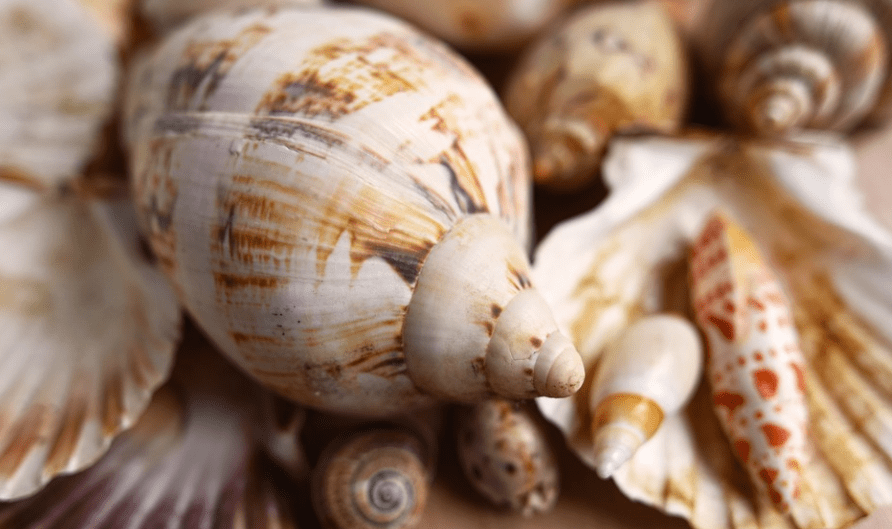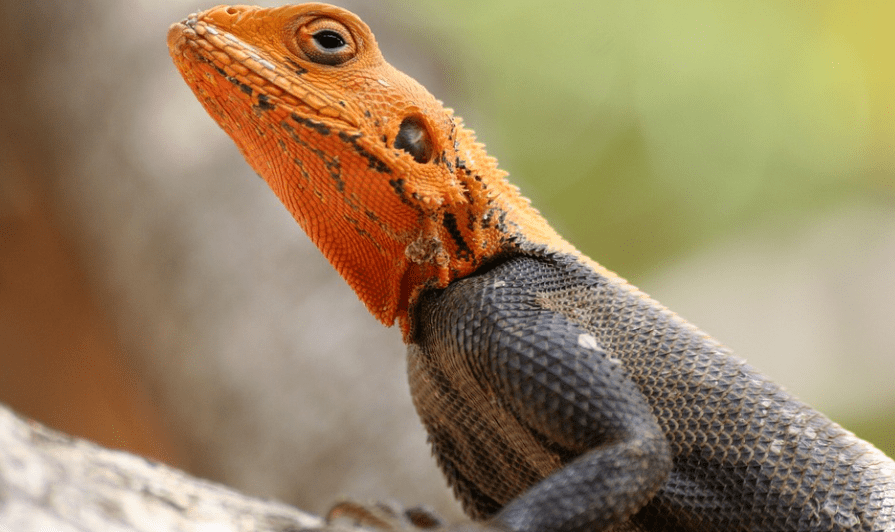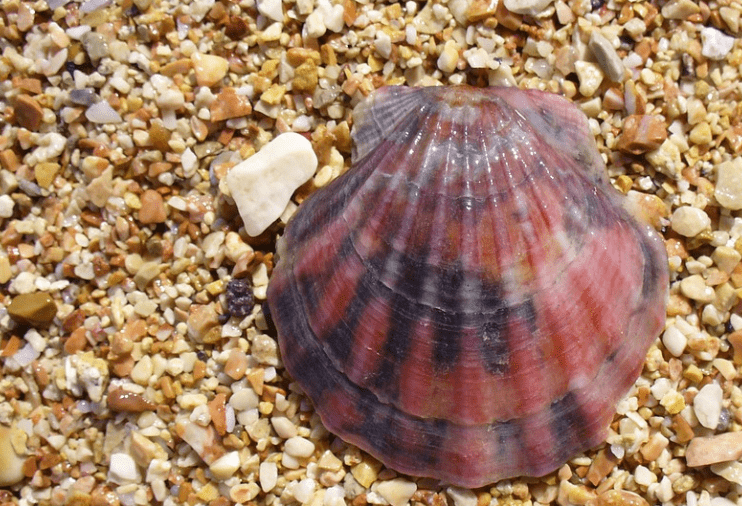Animals that crawl are an interesting and diverse group of creatures. From spiders to millipedes, these animals have adapted to their environment in a variety of ways, each with its own unique characteristics.
For those interested in learning more about these fascinating creatures, this blog post will provide a comprehensive overview of the different animals that crawl and the unique characteristics of each one. Please keeping read to see our findings!
Read Also: List Of Animals With Shells (With Pictures)
What are Crawling Animals?
Crawling Animals are a group of animals with the characteristic of crawling rather than walking or running.
These animals are typically classified as terrestrial, meaning they mostly crawl on land, not in the water or air. These animals move by crawling on the ground or other surfaces. Examples of crawling animals include insects, reptiles, amphibians, and arachnids.
Insects are the most numerous crawling animals. They are characterized by their three-part body segmentation, including the head, thorax, and abdomen, and their three pairs of jointed legs. Insects also have antennae and wings in some species. Examples of insects include ants, bees, beetles, cockroaches, grasshoppers, and flies.
Reptiles are the second largest group of crawling animals. Reptiles, unlike insects, have a backbone. They also have scales, and some species possess claws or claws and nails. Examples of reptiles include lizards, snakes, turtles, and crocodiles.
Amphibians are the third group of crawling animals. Amphibians have soft, porous skin that enables them to live in and out of water. Some species of amphibians have a tail, while others do not. Examples of amphibians include frogs, salamanders, and toads.
Arachnids are the last type of crawling animal. Unlike other crawling animals, arachnids have eight legs instead of six. They also have two body segments and four pairs of eyes. Examples of arachnids include spiders, scorpions, and mites.
Read Also: 3 Real Animals With No Neck
Crawling animals are important to many ecosystems as they are predators, prey, and pollinators.
They are also significant food sources for many animals. Understanding the importance of these animals and their habitats is important, as many species are threatened due to habitat destruction, pollution, and climate change.
Difference Between Crawling and Creeping
Crawling and creeping are two types of locomotion used by animals but vary in speed and technique depending on the species.
Crawling is the movement of an animal using its hands and feet simultaneously. At the same time, creeping is the movement of an animal using only its hands or feet.
An animal that crawls can move faster than one that creeps, as using both hands and feet allows for faster locomotion.
This type of movement is often associated with fast-moving animals such as rodents or lizards. While some animals can crawl or creep, others may only be capable of performing one type of locomotion, making them either a crawler or a creeper.
For example, spiders can be limited to creeping due to their eight legs. In contrast, frogs are considered crawlers because they can move forward with both their arms and legs.
Which Animal Crawls on Stomach?
Reptiles, insects, lizards, snakes, turtles, and crocodiles all crawl on their bellies. This movement is beneficial as it helps them remain low to the ground and camouflaged in their environment.
It also means they can move quickly and stealthily through tight spaces or difficult terrain.
Different species of animals have adapted to crawling in different ways; some use their limbs and claws, while others use their entire bodies, including their tails, or even just one limb at a time.
Crawling helps these animals stay close to the ground, where they can sense potential prey or predators and quickly escape danger.
Animals that crawl are listed below:
Animals that crawl are an important part of the animal kingdom. These animals move uniquely, using their legs and sometimes their bellies and tail to propel themselves.
They often live in habitats where they can easily hide from predators or seek out food sources. Explore our list of these animals we were able to gather:
1. Land Snail

Snails are a species of gastropod mollusk that lives in various habitats, from the sea to desert and even urban environments.
They have long been known for their slow pace – terrestrial snails, for example, can only travel at about one meter per hour. But this slow pace has not prevented them from becoming successful animals; they are abundant and widespread worldwide.
Snails have evolved to be well-adapted to their environment, with some species surviving without food or water for up to several weeks at a time. Their soft bodies are also protected by an external shell which helps them resist predation and extreme temperatures.
Additionally, snails are hermaphrodites, which means each individual can produce eggs and sperm, allowing them to reproduce quickly and efficiently. Truly, these fascinating creatures have proven incredibly resilient over time!
Read Also: List of 3 Letter Animals: (Details And Pictures)
2. Lizard

Lizards are a type of reptile that come in a variety of shapes and sizes, ranging from the small gecko to the large Komodo dragon.
These animals can be found in almost every part of the world and are known for their adaptability and hardiness.
They have long tails which help them balance and maneuver quickly, as well as powerful legs that allow them to reach speeds of up to 21 miles per hour.
Lizards use their strong claws for climbing, digging, and catching prey. They also have keen eyesight, which helps them detect both movement and color.
Lizards primarily eat insects, but some larger species may feed on small mammals or birds. In addition to being interesting creatures, humans have used lizards for centuries in traditional medicine, rituals, and food.
3. Snake

Snakes are some of the most mysterious creatures on Earth. Although often feared, they can provide captivating entertainment when observed in their natural habitats.
Snakes come in various forms, with some species growing up to 30 feet long! Most snakes can move quickly over short distances, reaching 12 to 18 miles per hour in short bursts.
They use this quick movement to capture their prey and escape from potential dangers such as predators or humans.
Snakes usually live in burrows or other sheltered places and can be found on every continent except Antarctica.
Their diet consists mainly of small mammals, insects, amphibians, and reptiles, depending on the species.
Read Also: 11 Examples of Animals With Tusks (Pictures And Overviews)
4. Ant

Ants are amazing creatures – they can move at almost a meter per second, which is extremely fast considering their size. An ant’s body length is usually only a few millimeters, so this impressive speed is remarkable.
Ants are incredible little creatures adapted to survive in almost any environment. They have an organized social structure and can move quickly to find food or defend themselves.
Ants can even lift up to 50 times their body weight, which makes them one of the strongest animals relative to their size! When it comes to ants, it’s easy to marvel at their strength, speed, and ability to work together as a team.
5. Butterfly

The butterfly is a beautiful creature, and the process of metamorphosis it undergoes to reach adulthood is incredible!
After spending days in its chrysalis, the butterfly finally starts to emerge. First, its head and antennae appear, followed by its wings as they slowly unfurl.
Then the tiny insect pushes out its legs until it is completely free of its cocoon, with only part of it left behind.
Finally, the butterfly crawls the rest of the way out of the chrysalis and takes flight for the first time.
It is a magical moment as this fragile insect takes to the air after spending so much time in such a tight space.
The delicate wings carry it away on a journey of discovery and exploration, never forgetting where it came from or how far it has come to reach this point in its life.
6. Crabs

Crabs have unique form movements that can be both mesmerizing and intimidating. The crab is known to move sideways due to its asymmetrical body shape and design.
This sideways motion can reach up to 12 miles per hour, making them one of the faster animals in the ocean. Crabs’ hard outer shell protects them from predators, while their claws are used for gathering food and defense.
Crabs range from tiny pea crabs to large Japanese spider crabs. They inhabit many habitats, such as sandy beaches, rocky shores, coral reefs, estuaries, and freshwater lakes.
Crabs are omnivores that feed on plant material and smaller animals like worms and mollusks. Each species has adapted over time to fit its particular environment.
7. Alligator

Alligators are large reptiles with heavy bodies and powerful tails. They can be found in freshwater environments such as lakes, rivers, swamps, and marshes all over the world.
Alligators can move quite quickly on land, reaching speeds of up to 30 miles per hour in short bursts. Most of their time is spent in the water, where they are strong swimmers and use their tails to propel them through the water.
Alligators have long snouts and powerful jaws that enable them to capture prey easily. They also have sharp teeth that help them tear apart their food.
Alligators feed on animals such as fish, turtles, birds, and mammals. They are also known to eat other alligators if necessary.
8. Crocodile

The crocodile is an incredibly ancient creature living on our planet for millions of years. They are well known for their powerful jaws and ability to stay underwater for long periods.
Crocodiles have a maximum speed of 12 to 14 kilometers per hour. They can go even faster when they need to chase after prey or avoid predators.
However, they can only keep up this pace for short periods, so they need to conserve their energy as much as possible.
Their tough scales also help protect them from injury in the water. Combined with their impressive speed, crocodiles are one of the top predators in many habitats worldwide.
9. Sloths

Sloths have a unique way of life, spending most of their time hanging upside down in the trees of tropical rainforests. Sloths have become famous for their slow movements, and they can only manage to move at a speed of one foot per minute!
Even when they decide to journey, it takes them hours to lumber through the trees. This is because they move so slowly that algae grow on their fur!
Sloths have also adapted to living in trees, as their long claws help them hang on tight, and their strong arms allow them to swing from branch to branch.
10. Spiders

The giant house spider is one of the larger varieties, measuring up to two inches long. Though their size may seem intimidating, most spiders are harmless to humans.
They often help us by eating other pests that could damage our homes or gardens. Not only that, but spiders also produce beautiful webs, which can be an amazing sight to see on a sunny day in the garden.
In short, spiders provide many benefits and should be appreciated for all their work! They can move around quite quickly, traveling up to 1.73 feet per second!
11. Earthworms

Earthworms play an important role in the health of our environment. They have long, segmented bodies and live in the soil.
Earthworms can range from small to big earthworms, depending on the species. They eat organic matter such as dead leaves, grass clippings, and manure which helps keep the soil healthy by aerating it and producing nutrients for plants.
On average, earthworms can travel about 185 feet per hour, quickly moving around their environment and looking for food.
Earthworms are also known for their ability to regenerate after being cut in half, which is why they can live up to seven years or longer in some cases.
12. Frogs And Toads

Frogs and toads are some of the most popular amphibians in the world. Both creatures can swim and crawl, but frogs are much faster on land than toads.
Frogs can reach up to 8 kilometers per hour when they move on land, while toads can only reach about 10 miles per hour.
However, both animals have unique skills that make them valuable members of the ecosystem. For example, frogs can jump great distances and have sticky tongues that help them catch their prey.
Toads have dry, warty skin that helps protect them from predators, and they burrow underground to hide from danger. All in all, both frogs and toads play an important role in keeping our environment healthy and full of life.
13. Scorpions

Scorpions are found living in a variety of habitats around the world. They have eight legs, two large pincers, and an elongated tail with a venomous stinger at the end.
Scorpions are known for their impressive speed, reaching up to 12 mph when chasing prey. They usually feed on insects and other invertebrates, such as spiders and centipedes.
Some species of scorpion will also hunt small vertebrates, such as mice or lizards.
Scorpions are nocturnal creatures, spending the day hiding under rocks or burrowing into the ground to keep them cool and protected from predators. At night they come out to find food or mates.
14. Caterpillars

Despite their small size, caterpillars have an uncanny ability to crawl and easily move around. Amazingly, they can crawl at nearly one mile an hour.
Their bodies comprise several distinct segments and have multiple sets of legs that help them move along. Caterpillars can come in many colors and sizes depending on the species.
Some may even have horns or spikes that help protect them from predators. Watching a caterpillar crawl along, making its way through its environment easily, is amazing.
15. Turtles

Turtles have been around for millions of years, from the largest leatherback turtle to the tiny musk turtle. Turtles can be found on land, in freshwater, and in the oceans.
They are typically slow-moving animals, with most turtles able to travel at 3 to 4 mph. This allows them to leisurely explore their environment without spending too much energy.
While they may be slow, turtles can cover long distances over time as they migrate between different habitats throughout the year.
They are important members of many ecosystems and provide food for predators such as raccoons, foxes, and birds of prey. Turtles also offer us interesting insight into the evolution and adaptation strategies that species have used over time to survive in changing environments.
16. Iguanas

Iguanas are popular pets for many. They have long bodies with powerful legs and claws that help them to move around, climb trees, and even reach speeds of up to 21 miles per hour.
Iguanas are often found in tropical climates, near rivers or lakes where they can find plenty of food. They enjoy basking in the sun and eating fruit, leaves, and insects.
Iguanas have strong jaws and sharp teeth, allowing them to eat tough plants like cacti. In the wild, they can live for up to 20 years due to their diet rich in vitamins and minerals. They make great pets as they require minimal care and attention from owners.
Final Thoughts: animals that crawl on the ground
In conclusion, crawling is an important locomotion for many animals, from the lowly moths to the mighty crocs. Crawling is a fascinating part of animal biology, and watching these creatures move through their environment is fascinating.
If you find this article helpful, please share it with your loved ones.







